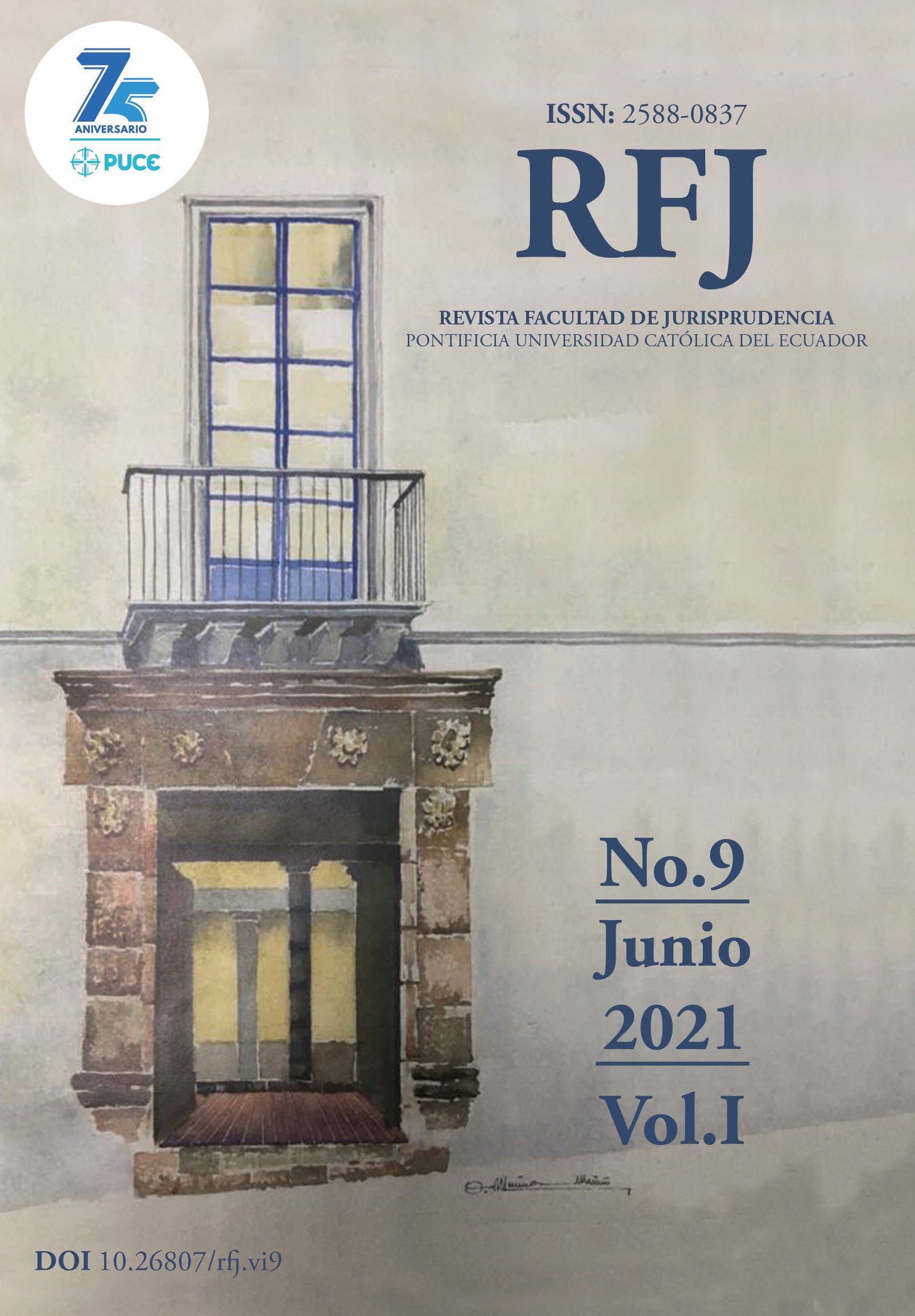La extensiva interpretación del tipo penal de tráfico de sustancias catalogadas sujetas a fiscalización: el caso N° 18282-2018-00726
Contenido principal del artículo
Resumen
ABSTRACT
The author analyzing the penal type prescribed in article 220 of the COIP, because he considers their interpretation is extensive. To verify this assertion is necessary to evaluate the international legal context for the illegal use of narcotic and psychotropic substances, in line with the old Narcotics Law that was invalidation until the enactment of the COIP in 2014. Additionally, the paradigm shift has drawn up as a result of the entry into force of the National Constitution of 2008, which stops the consumer of prohibited substances as a criminal from receiving treatment for victims. Finally, the author analyzes to correctly interpret the aforementioned criminal type and consequently proposes an interpretation criterion reflected in the analysis of a judicial case that occurred in one of the Ecuadorian courts, thus concluding that in the Ecuadorian criminal legal system simple drug possession is atypical.
KEYWORDS: Criminal law, interpretation, crime, drug trafficking, criminal sanction.
RESUMEN
El autor se encarga de analizar con exhaustividad el tipo penal prescrito en el artículo 220 del Código Orgánico Integral Penal (COIP), pues a su forma de ver las cosas se lo ha venido interpretando de forma extensiva. Para comprobar esta aseveración, se evalúa el contexto jurídico internacional referente al uso ilegal de sustancias estupefacientes y psicotrópicas, en consonancia con la vieja Ley de estupefacientes que estuvo vigente hasta la promulgación del COIP en el año 2014. Además, se resalta el cambio de paradigma trazado a raíz de la entrada en vigencia de la Constitución Nacional de 2008, en el que deja de verse al consumidor de sustancias prohibidas como un delincuente para darle el tratamiento de víctima. Finalmente, el autor hace un análisis dogmático para interpretar correctamente el tipo penal aludido y consecuentemente propone un criterio hermenéutico que luego lo plasma en el análisis de un caso judicial acaecido en uno de los juzgados del Ecuador, concluyendo así que en el ordenamiento jurídico-penal ecuatoriano es atípica la tenencia simple de droga.
CÓDIGO JEL: K0, K00, K14
Descargas
Detalles del artículo
Citas
Association of the Royal Academy of Language. (2014). Dictionary of the Royal Spanish Academy. Recovered from: http://dle.rae.es/?id=aELNlgY
Bobbio, N. (1991). Teoría General del Derecho, trad. Eduardo Rozo Acuña. Madrid: Editorial Debate.
García, F. M. (2010). Derecho Penal: Parte general, 8d edition. Valencia: Editorial Tirant lo Blanch.
Welzel, H. (1956). Derecho penal parte general. Trad. Carlos Fontán Balestra. Buenos Aires: Depalma.
Zaffaroni, E., Alagia, A. and Slokar, A. (2002). Derecho penal parte general, 2nd edition. Buenos Aires: Ediar.
Constitution of the Republic of Ecuador [Const.] (2008). 2nd ed. CEP.
Criminal Judicial Unit with headquarters in Ambato Canton. Case 18282-2018-00726 (25 June 2018). Retrieved from: http://consultas.funcionjudicial.gob.ec/informacionjudicial/public/informacion.jsf
National Assembly of Ecuador. Comprehensive Organic Criminal Code. [Code]. RO. 180 of 10 February 2014.
National Congress of Ecuador. Law of Narcotic and Psychotropic Substances. [Law 25 of 2004]. (12 September 2014). RO. 490 of December 27, 2004.
National Council for the Control of Narcotic and Psychotropic Substances CONSEP. Resolution No. 001-CONSEP-CD-2015. (9 September 2015). Second Supplement to the RO. 586 of September 14, 2015.
National Council for the Control of Narcotic and Psychotropic Substances CONSEP. Resolution No. 001-CONSEP-CD- 2013. (21 May 2013).
United Nations. Single Convention on Narcotic Drugs of 1961. (1961).
United Nations. United Nations Convention against Illicit Traffic in Narcotic Drugs and Psychotropic Substances of 1988. (1998).





